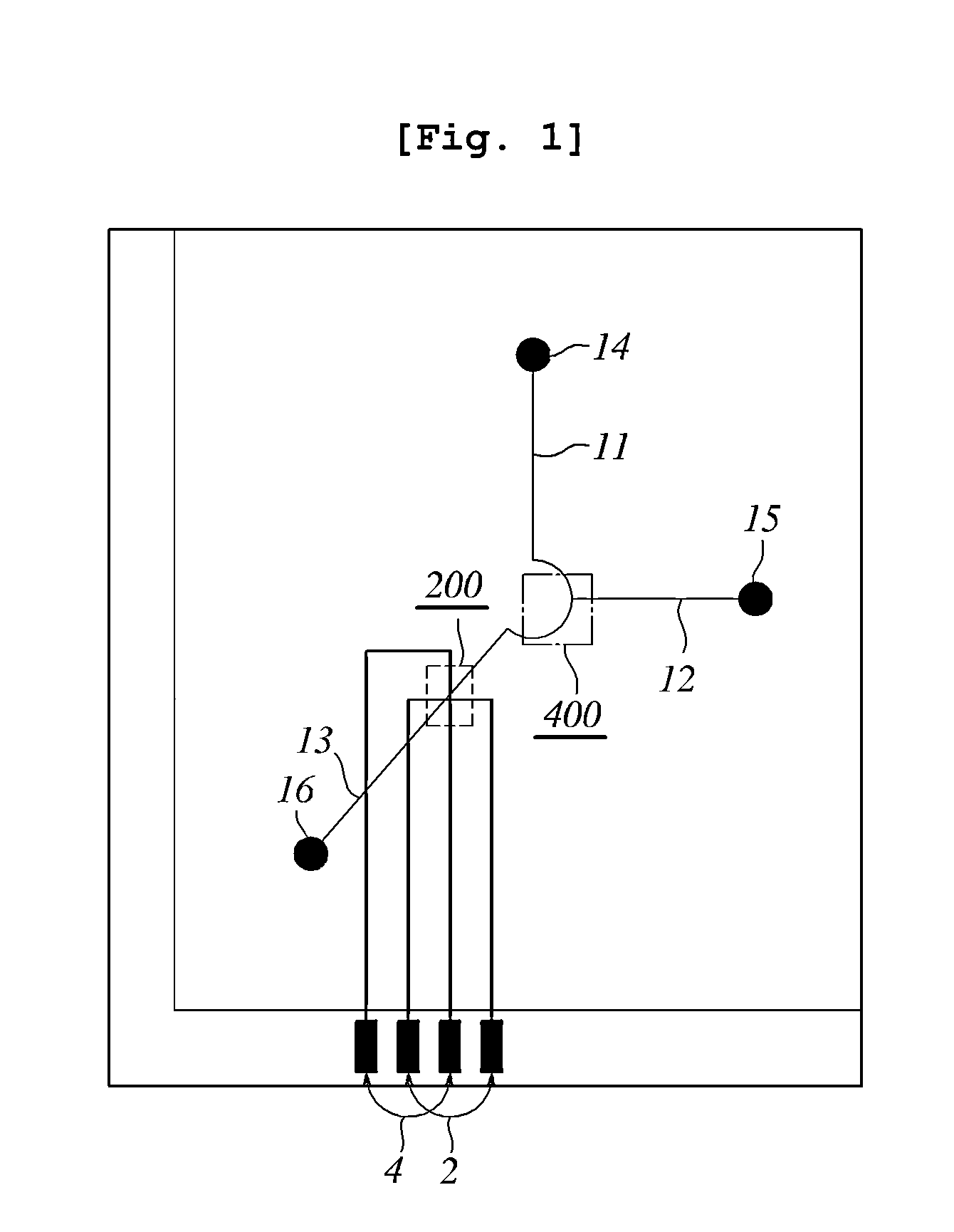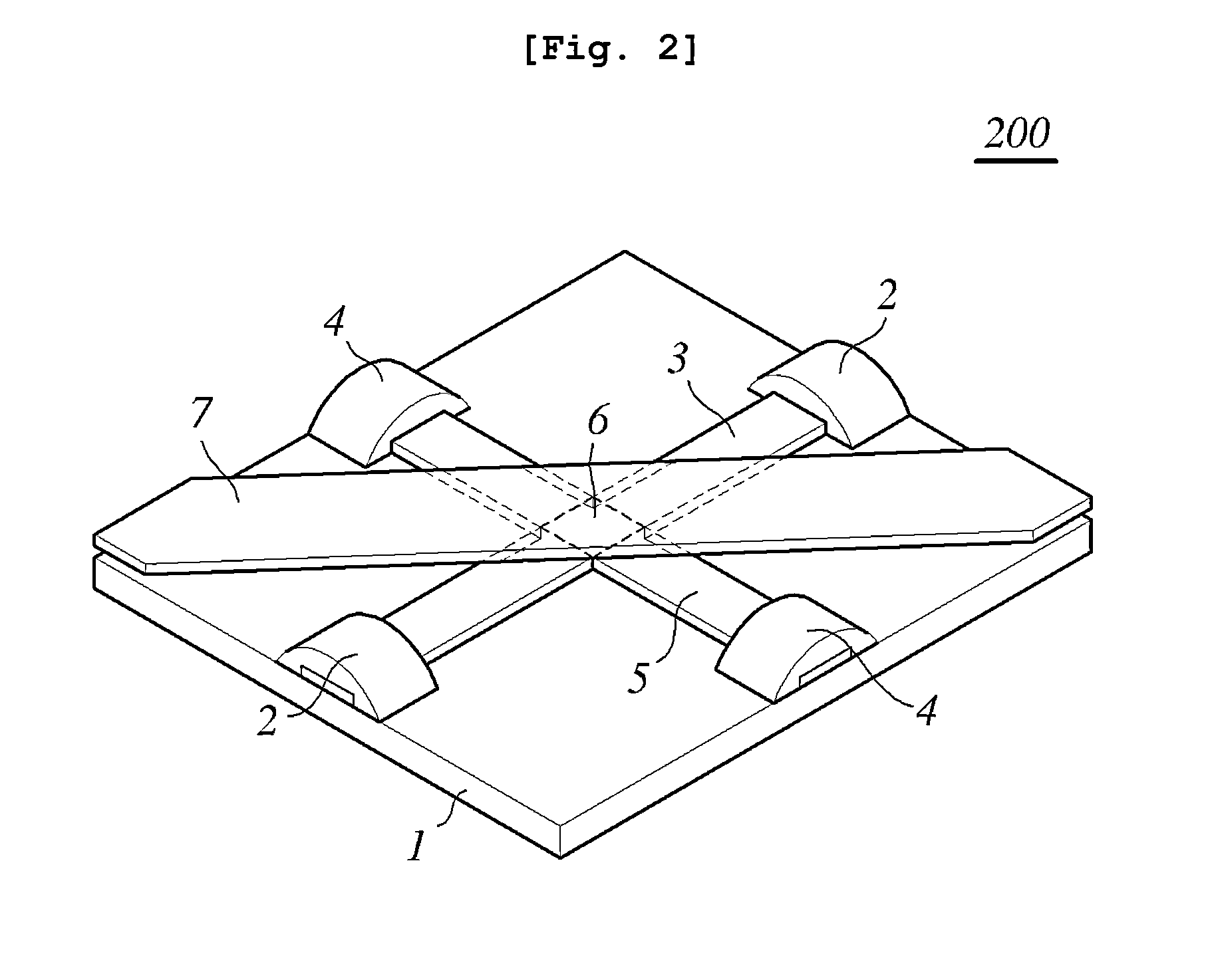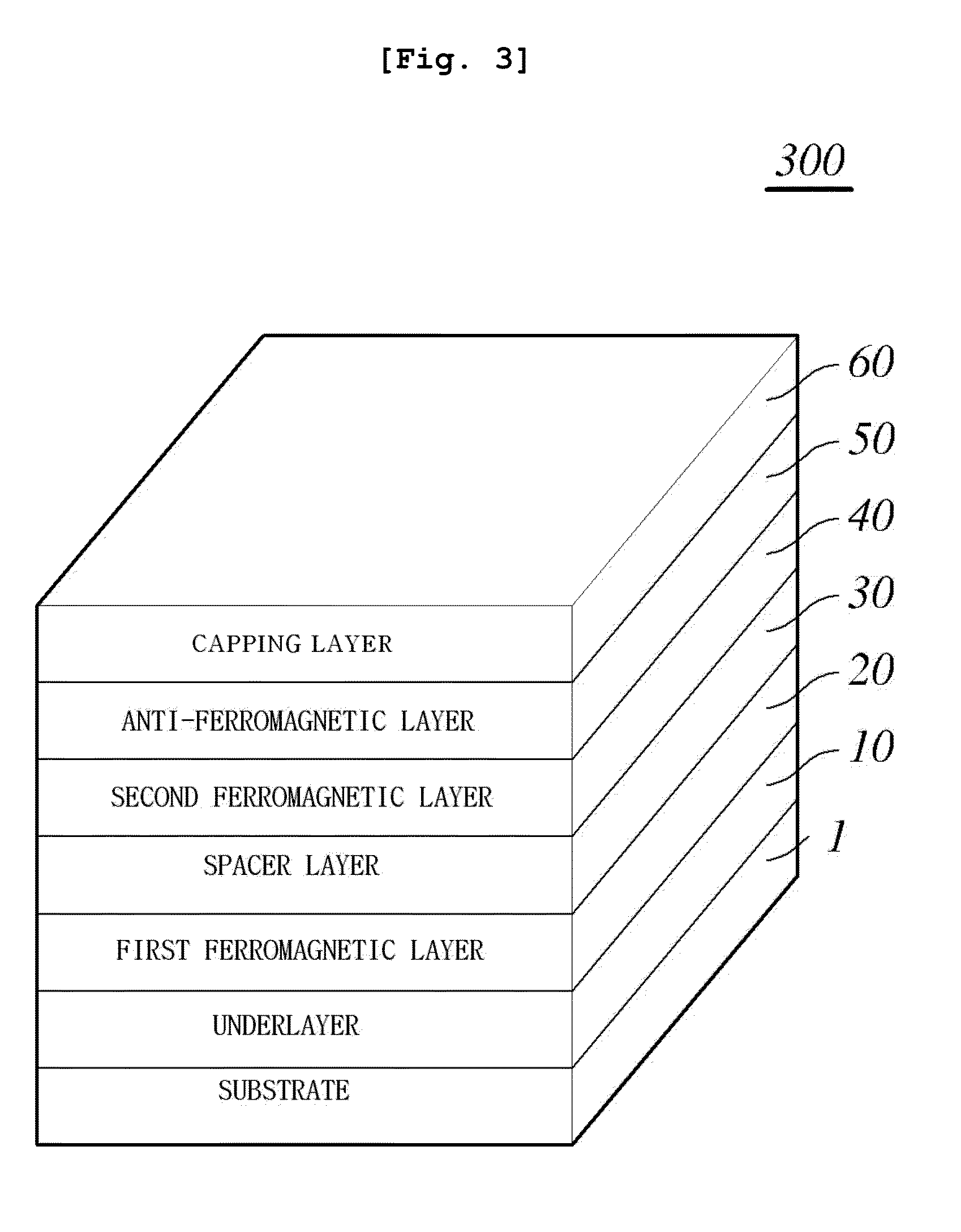Microfluidic chip for susceptibility of superparamagnetic nanoparticles of bead and droplet types and measuring method for susceptibility using the same
a microfluidic chip and superparamagnetic nanoparticle technology, applied in the field of microfluidic chips, can solve the problems of high cost, unsuitable use method, unsuitable point-of-care testing, etc., and achieve the effect of high accuracy
- Summary
- Abstract
- Description
- Claims
- Application Information
AI Technical Summary
Benefits of technology
Problems solved by technology
Method used
Image
Examples
example 1
Fabrication of Planar Hall Resistive Sensor
[0126]A planar Hall resistive sensor was fabricated on a glass substrate having a size of 30 mm×30 mm by repeating photolithographic and sputtering processes.
[0127]1. Photolithography
[0128]Photoresist (Az 5214, AZ Electronic Materials) was dropped onto a glass substrate, after which it was spin-coated using a spin coater at 3000 RPM for 30 seconds and heat-treated at 120° C. for 1 minute. A mask was aligned on the heat-treated substrate using a mask aligner (MDA 400S, MIDAS SYSTEM. Korea), followed by exposure to light for 10 seconds. The exposed substrate was developed with an AZ developer for 1 minute, and then washed in distilled water.
[0129]2. Deposition of Planar Hall Resistive Sensor by Sputter
[0130]After the photolithographic process, the substrate was placed in a magnetron sputter, and a sensor layer was deposited on the substrate. The sensor had a spin valve structure consisting of Ta (6 nm), nickel-iron (NiFe) (10 nm), Cu (1.2 nm)...
example 2
Fabrication of Microfluidic Chip
[0131]1. Formation of Microfluidic Channels
[0132]1-1. Fabrication of Mold by Photolithography
[0133]First, a mold was fabricated on a 3 inch silicon substrate by a photolithographic process. The silicon substrate used had a 500 nm thick SiO2 layer at one side and was ultrasonically washed with acetone for 30 min and methanol for 30 min. SU-8 2015 (MICROCHEM) photoresist was spin-coated on the washed silicon substrate to a thickness of 10 μm using a spin coater (SPIN 1200D, MIDAS SYSTEM. Korea) at 2000 RPM. The photoresist-coated substrate was heat-treated in an oven at 70° C. for 2 minutes, and then heat-treated in an oven at 100° C. for 5 minutes. A mask was aligned on the heat-treated substrate in a mask aligner, and then exposed to light for 5 minutes. After exposure to light, the substrate was heat-treated in an oven at 70° C. for 1 minute, and then heat-treated in an oven at 100° C. for 2 minutes. The heat-treated substrate was developed in an SU ...
example 3
Measurement of Magnetic Susceptibility of Superparamagnetic Nanoparticle Bead Using Microfluidic Chip
[0138]1. Measurement of Magnetic Fluid Flowing in Microfluidic Chip
[0139]In order to measure a magnetic fluid flowing in the microfluidic chip under visual observation, a microscope was placed on a Helmholtz coil and connected to a monitor. In order to accurately measure a signal when a magnetic fluid flowing in the channel passes over the sensor, a microscopic program capable of observing the movement of the magnetic fluid and a Labview program capable of measuring the change in the signal in the sensor were provided in a single computer, and a system was designed such that two sets of data could be simultaneously observed on a single monitor. The microfluidic chip including the planar Hall resistive sensor was located at the center of a Helmholtz coil. The profile of the planar Hall resistive sensor was measured, and a magnetic field corresponding to the highest sensitivity of the ...
PUM
 Login to View More
Login to View More Abstract
Description
Claims
Application Information
 Login to View More
Login to View More - R&D
- Intellectual Property
- Life Sciences
- Materials
- Tech Scout
- Unparalleled Data Quality
- Higher Quality Content
- 60% Fewer Hallucinations
Browse by: Latest US Patents, China's latest patents, Technical Efficacy Thesaurus, Application Domain, Technology Topic, Popular Technical Reports.
© 2025 PatSnap. All rights reserved.Legal|Privacy policy|Modern Slavery Act Transparency Statement|Sitemap|About US| Contact US: help@patsnap.com



